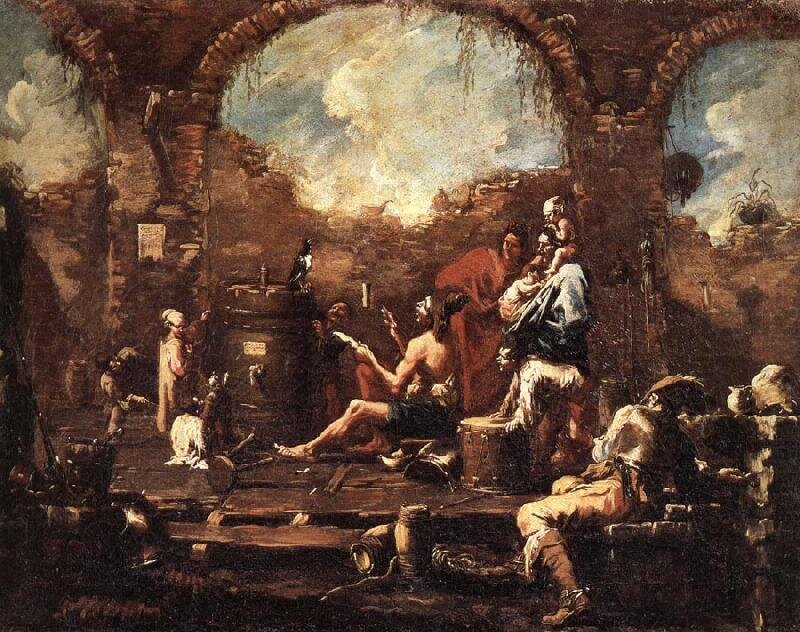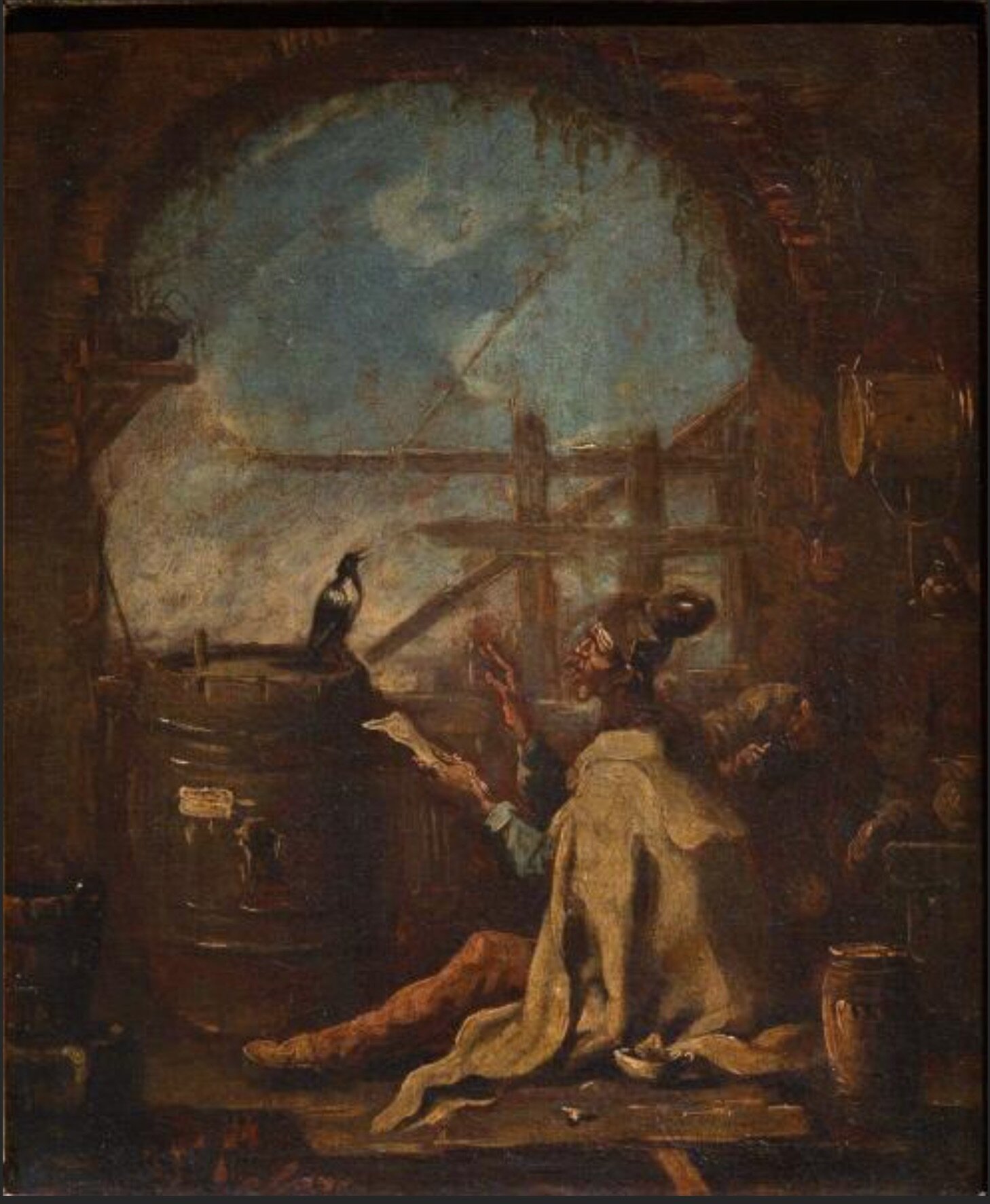A Short Note on Alessandro Magnasco's Trained Magpies
On my Instagram feed, @longeighteenthcentury, I’ve been posting lots of artworks from the eighteenth century. A few weeks ago, I posted a pair of paintings by Alessandro Magnasco (1667-1749), which I first saw in Frankfurt in 2019.
Alessandro Magnasco. Interrogation Scene (detail). ca. 1727-30. oil on canvas. 73.2 x 58.2 cm. Städel Museum. Frankfurt, Germany.
Alessandro Magnasco. Torture Scene (detail). ca. 1727-30. oil on canvas. 73.2 x 58.2 cm. Städel Museum. Frankfurt, Germany.
These two images of inquisition and torture are horrific, and, as I explain in my Instagram post, troublingly ambiguous in their meaning.
Today’s Instagram post returns to Alessandro Magnasco and a painting that he created as a much younger man.
Alessandro Magnasco. The Tame Magpie. ca. 1707–8. oil on canvas. 63.5 x 74.9 cm. Metropolitan Museum of Art, Katherine D. W. Glover Gift, 1984. 1984.191.
The narrative of this painting centers on a magpie singing on the top of wine barrels at a port. A man, sitting on the ground, appears to be singing with the magpie from a sheet of lyrics. Those gathered around are, by turns, relaxed and engaged with the performance or--as with the case of the children--distracted by play or hunger.
The scene suggests that its characters might be a single family, who live here. At least two of them might be soldiers, indicated by the guns and armor which they wear or which hang on the wall. Or, perhaps they are brigands.
The details of the painting are evocative. A broken pipe on the ground. A cat, ears back, flexed to pounce. A mother using a small bowl to feed her child.
The style of this image connects it to the traditions of the Bamboccianti, a group of primarily Dutch and Flemish genre painters who worked in Rome in the 17th century, as well as the Bentvueghels, a society of (again) mostly Dutch and Flemish artists who worked in Rome--some of whom were associated with the Bamboccianti.
The composition of this image is visually quite interesting. It consists of three triangular figure groups, two of which overlap in the foreground and one in the background. These overlapping triangles are emphasized by a triangular niche at the exact center of the painting that holds an empty flask of wine.
The figure group on the right focuses on the magpie. That in the back features a mother holding up a baby to see the magpie, as a seemingly drunken old man reaches up towards the child. The figure group on the left invokes the iconography of Charity. Similar to the style of the Bentvueghels, Magnasco places Charity into a scene from everyday life, in this case, into the life of a family (or families) taking time for playful frivolity that's quite possibly lubricated by wine.
Like so many of Magnasco's works, this painting is ambivalent. On the one hand, it seems to represent a family group who, despite the struggles of day-to-day survival, can find joy and pleasure together. On the other hand, magpies in European art are often symbols of drinking and thieving. Is Magnasco attempting to tell us that there is an uglier side to this group?
This is not the only time a magpie shows up in Magnasco's work. There are oil paintings of trained magpies at the Uffizi and at the Pushkin museum. And, one of his drawings at the Art Institute of Chicago has a trained magpie paired with trained monkey--itself often a symbol of evil in European painting.
As we see in these images, some of the same characters and forms recur as Magnasco experiments and refines his work. It’s interesting to imagine to what extent these various characters are figure types and to what extent they represent people that Magnasco had met on the streets of Genoa in the early eighteenth century.
From left to right:
Alessandro Magnasco. La gazza ammaestrata (The Trained Magpie). Early 18th century. Oil on canvas. 47 x 61 cm. Galleria degli Uffizi, Firenze, Italia.
Alessandro Magnasco. Training a Magpie. Early 18th century. oil on canvas. 40 x 31 cm. Pushkin Museum of Fine Arts, Moscow, Russia.
Alessandro Magnasco. Picaresque Group with a Monkey. 1720/25. Brush and brown gouache and brush and brown wash, with touches of red and brown chalk, heightened with white chalk, over black chalk, on blue laid paper (discolored to pale brownish-gray). 47.8 × 37.2 cm. Art Institute of Chicago, Helen Regenstein Collection. 1962.586.






